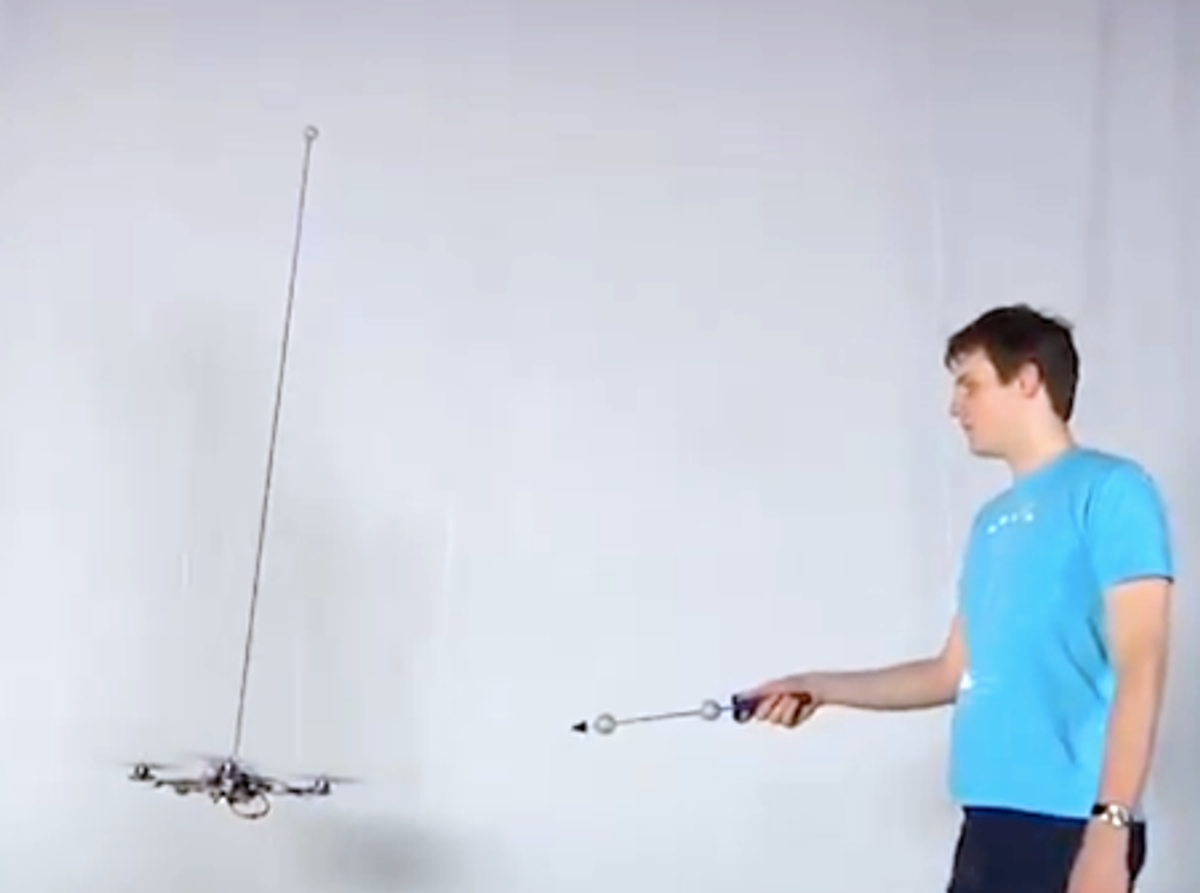Raffaello D’Andrea and his disciples at ETH Zurich love to build beautiful robots—a robotic cube that balances on one corner, modular flying robots that self-assemble, a pair of quadrotors that can juggle a ball together.
More recently, D’Andrea and Markus Hehn have demonstrated a quadrotor capable of balancing an inverted pendulum in flight. Now this clever little flying machine has gotten even more talented. It’s learned how to fly sideways, up and down, and in circles while keeping the pendulum stable. Watch:
The quadrotor is not doing everything by itself. It’s getting help from the environment, an enclosed space called the Flying Machine Arena, which is equipped with multiple motion capture cameras. The researchers devised algorithms to transform the vision data from the cameras into control commands for the quadrotor. The machine can hover in place or it can follow pre-programmed trajectories. Manual control is also possible using a “set point tracking” device.
Hehn and D’Andrea, an IEEE Fellow and co-founder of Kiva Systems, which develops warehouse automation robots (disclosure: he’s also a member of IEEE Spectrum’s editorial advisory board), describe the project in a paper, “A Flying Inverted Pendulum,” presented today at the IEEE International Conference on Robotics and Automation (ICRA), in Shanghai.
Evan Ackerman is a senior editor at IEEE Spectrum. Since 2007, he has written over 6,000 articles on robotics and technology. He has a degree in Martian geology and is excellent at playing bagpipes.
Erico Guizzo is the director of digital innovation at IEEE Spectrum, and cofounder of the IEEE Robots Guide, an award-winning interactive site about robotics. He oversees the operation, integration, and new feature development for all digital properties and platforms, including the Spectrum website, newsletters, CMS, editorial workflow systems, and analytics and AI tools. An IEEE Member, he is an electrical engineer by training and has a master’s degree in science writing from MIT.



